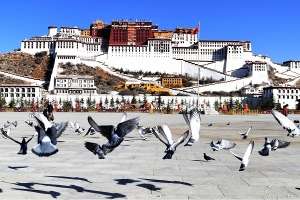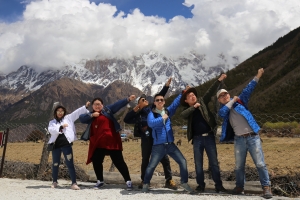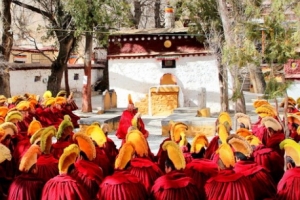For those seeking the spiritual vastness and otherworldly landscapes of Tibet, your journey begins long before your boots meet the plateau. If you’re departing from Vietnam, particularly from the bustling cities of Ho Chi Minh City or Hanoi, reaching Lhasa—the capital of Tibet—is a thrilling, if slightly intricate, endeavour. Due to Lhasa Gonggar Airport’s unique location and geopolitical sensitivities, there are no direct international flights into the city. However, travellers can still access Tibet relatively smoothly via Chinese gateway cities such as Chengdu, Kunming, or Chongqing.
In this guide, we’ll explore the flight routes from Ho Chi Minh City and Hanoi to Lhasa, offer a comparison between the two departure cities, and introduce Chengdu as a valuable and enriching stopover destination along the way.
Departing from Ho Chi Minh City (SGN) to Lhasa
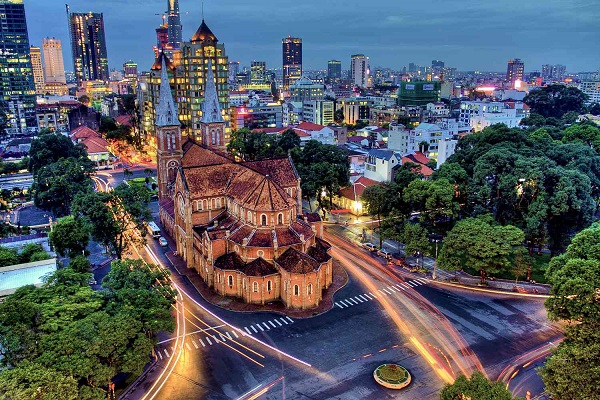
Ho Chi Minh City
Ho Chi Minh City is Vietnam’s largest and busiest international air hub, with excellent connectivity to major cities across China. For travellers heading to Tibet, it offers perhaps the most flexible and convenient options for reaching Lhasa.
The most popular routing from SGN to Lhasa involves a stop in Chengdu Shuangliu International Airport (CTU) or Kunming Changshui International Airport (KMG). Airlines such as China Southern, Sichuan Airlines, and China Eastern operate regular flights to these hubs, which then offer onward domestic flights into Lhasa.
Here’s a common example route:
-
SGN → Chengdu (CTU) via China Southern or Sichuan Airlines
-
CTU → Lhasa (LXA) via Sichuan Airlines or Tibet Airlines
The total travel time usually ranges from 10 to 15 hours, depending on the length of your layover. Ho Chi Minh City’s Tan Son Nhat International Airport is well-equipped and generally offers more international flight options than Hanoi, making it a favourable choice for those wanting more flexibility.
Departing from Hanoi (HAN) to Lhasa
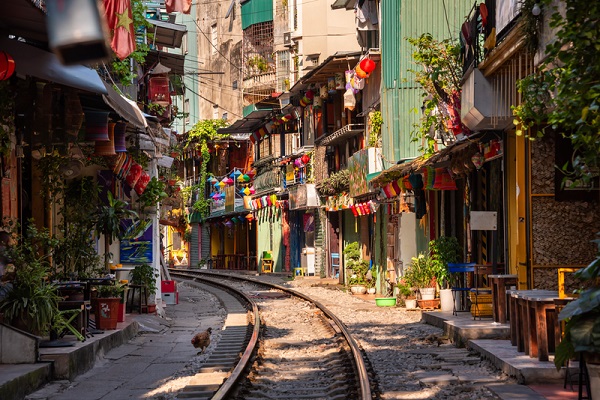
Hanoi
Hanoi’s Noi Bai International Airport may be closer to Tibet on the map, but ironically it offers fewer and more limited flight options to Lhasa compared to Ho Chi Minh City. Flights from Hanoi usually require transit through one of the same Chinese hubs—Kunming, Chengdu, or Chongqing.
A typical itinerary might look like this:
-
HAN → Kunming (KMG) via China Eastern
-
KMG → Lhasa (LXA) via Tibet Airlines
Although the flight duration can be similar to routes departing from SGN, Hanoi’s more limited schedule and smaller pool of operating airlines means travellers might face longer layovers or fewer date options when booking.
That said, if you’re already in northern Vietnam or planning to visit the mountainous region before heading to Tibet, flying out of Hanoi may still be the most efficient geographically.
Chengdu: A Worthwhile Stopover—If You Give It Time
Many travellers flying from Vietnam to Tibet will transit through Chengdu, and for good reason—it remains the most active gateway city for flights to Lhasa. However, Chengdu deserves more than a mere overnight layover. If your itinerary allows, consider spending a full day here to make the most of your stop.

Giant Panda Breeding Research Base
While many guides list the Giant Panda Breeding Research Base as a top attraction, it’s important to note: pandas are only active in the early morning, especially when the weather is cool. If you arrive in Chengdu by noon or later, it’s likely you’ll just catch the pandas sleeping or hidden away from the heat. The base is also some distance from the city, and transit from the airport into town—while served by high-speed rail—can take upwards of 30 to 45 minutes, making rushed visits a logistical headache.
If you truly want to enjoy the Panda Base, plan to stay overnight and head there first thing the next morning. Afterwards, you can spend the afternoon immersing yourself in the historic and cultural heart of the city.
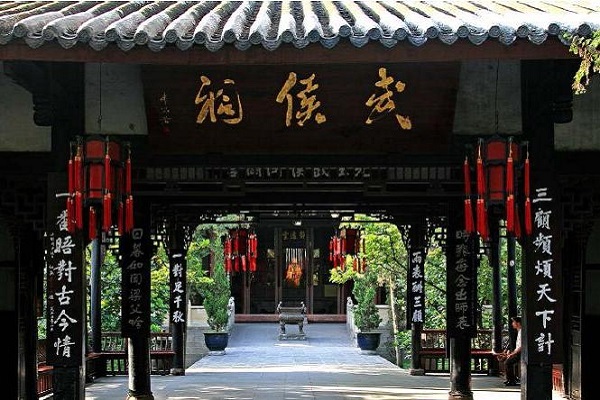
Wuhou Shrine
Here’s a recommended one-day itinerary in Chengdu:
-
Morning: Visit the Panda Base early (before 9 a.m.) while it’s cool and the pandas are most active.
-
Midday to Afternoon: Explore Wuhou Shrine and Jinli Ancient Street, where history, culture, and leisure all mingle under the slow rustle of bamboo fans and red lanterns. These areas are lined with traditional teahouses, perfect for a break. Just plop down in a bamboo chair, sip on fragrant tea—chrysanthemum, jasmine, or maybe something more local—and let the city’s old rhythm soak in.
And if you’re lucky? Some of these teahouses, especially in Jinli, still host Sichuan Opera face-changing performances (变脸) right in the courtyard. It’s a theatrical art where performers swap their vividly painted masks in the blink of an eye—pure sorcery for first-timers. Occasionally, these performances include limited audience interaction; if you’re feeling bold, you might even get a chance to step into the limelight (briefly!) and try a bit yourself. Rare, but memorable.
Of course, for café-lovers and those who crave the comforts of modernity, there’s even a Starbucks (星巴克咖啡) cleverly tucked into Jinli itself, styled with traditional Chinese décor. It’s air-conditioned, offers power outlets, and provides a more familiar environment without sacrificing the atmosphere. Just note the Chinese sign—星巴克咖啡—as you might miss it otherwise.
-
Evening: Wrap up your day with a fiery Sichuan hotpot dinner, best enjoyed with a cold beer or plum juice to counter the spice.
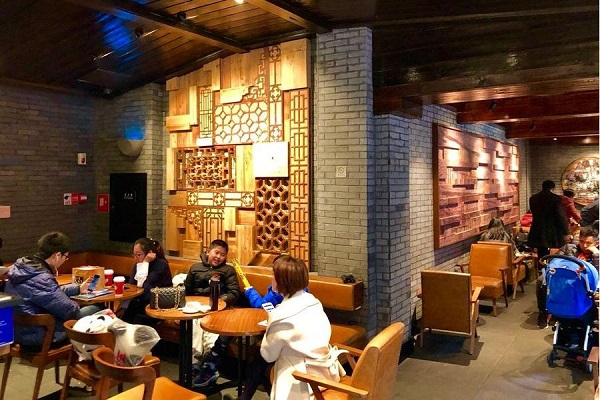
Starbucks in Jinli Ancient Street
By planning your layover as a full-day cultural stop, you’ll not only avoid the disappointment of sleeping pandas but also appreciate Chengdu on its own terms—a city that balances history, food, and leisure like no other.
Comparing the Routes: Ho Chi Minh City vs. Hanoi
When planning your journey to Tibet, choosing your point of departure within Vietnam can affect both your comfort and your options.
| Factor | Ho Chi Minh City (SGN) | Hanoi (HAN) |
|---|---|---|
| Flight Frequency | Higher | Lower |
| Airline Variety | More carriers and routes | Fewer direct partnerships |
| Transit City Options | Multiple (CTU, KMG, CKG) | Mostly Kunming or Chongqing |
| Layover Flexibility | More manageable | Sometimes longer or awkward |
| Airport Amenities | Better international facilities | More basic in comparison |
| Overall Convenience | More favourable | Viable but limited |
If you’re aiming for a seamless trip with plenty of choices, Ho Chi Minh City is the preferred launchpad. However, for travellers already in the north, Hanoi still offers a viable route, especially when timed well with flight schedules.
Conclusion for Vietnam-Based Travellers to Tibet
Flying from Vietnam to Tibet requires a bit more forethought than your average trip, but the journey is as rich as the destination. Whether you set off from the energetic south or the historic north, Tibet remains within easy reach for those willing to make one well-placed stopover in China.
And if your transit city is Chengdu, consider yourself lucky—it’s a cultural jewel in its own right, and a lovely place to acclimate yourself before confronting the mystical heights of the Tibetan Plateau.
As always, check visa and Tibet Permit requirements ahead of time, and work with reliable tour providers since independent travel in Tibet is restricted for foreign nationals. With a good itinerary and a spirit of adventure, your path from Vietnam to the Roof of the World will be as unforgettable as the land that awaits.

